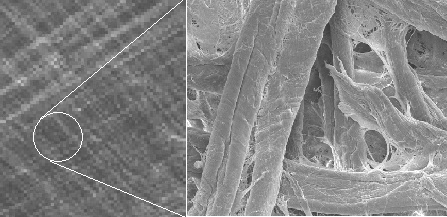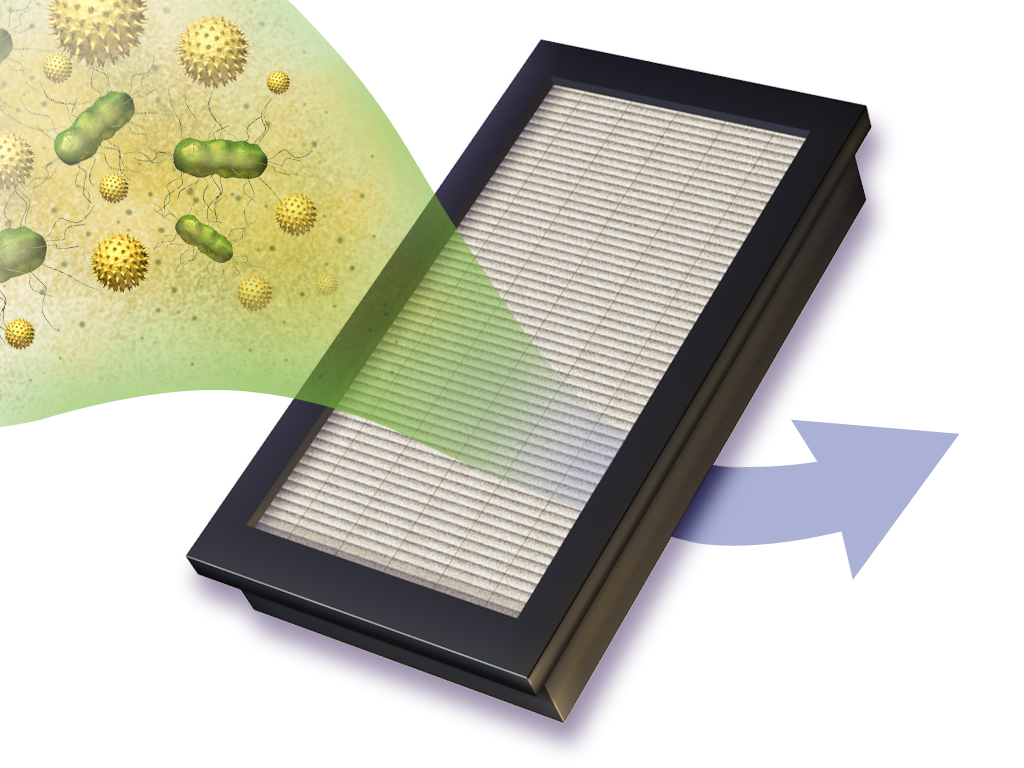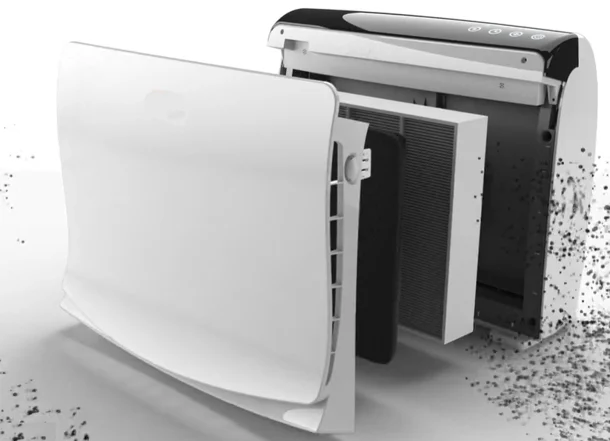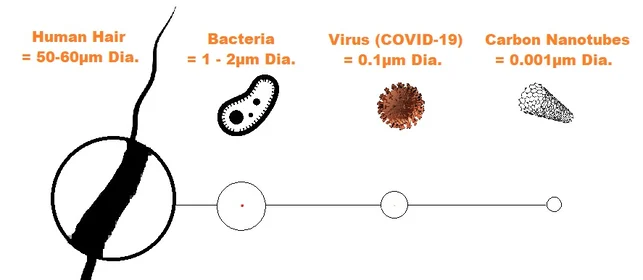
This article is the first of a two part series to help us better understand how carbon nanotubes can be used to filter and purify our most vital resources. Clean air and drinkable water are essential to human life, and maintaining each of them is an ongoing challenge. The safety of the air we breathe is very high in everyone’s thoughts recently, with the (COVID-19) Coronavirus quickly spreading across the world; therefore, it seems natural for us to focus first on air purification.
Airborne viruses and other hazards that come in the form of microscopic or nanoscopic particles present a significant challenge. Many toxins and harmful particles can become airborne; fortunately, this means that if we are able to circulate that air through some kind of treatment or cleaning station then the air will bring the toxins along with it to be trapped. There are two basic methods used to clean air: mechanical filtration and purification using electric fields or light. Each method can be tailored to fit the specific hazard you want to remove, whether that be viruses, odors, or pollutants. Of course, no single option is designed to combat every hazard. and there is a need to further develop these methods to improve efficiency and the range of toxins that can be dealt with.
Air Filters

Standard air filter options utilize materials with with pore size and shape that is determined by the construction of the material. By layering fabrics or electrospun materials together one can create materials with complex 3-D shapes, large internal surface areas, and microscopic pores that trap particles and pollutants as air passes through. Small pores are crucial for trapping the smallest particles, but small pores also clog quickly as they trap material, reducing the usable life of the filter; this can be offset by a large surface area with a larger number of pores and branching pathways for airflow, extending the usage time before the filter needs to be replaced.
One common type of air filter is a high-efficiency particulate air filter (or “HEPA” filter). HEPA filters are designed to effectively capture airborne particles and are able to trap particles down to 0.3 µm in size. One of the benefits of these filters is that they are generally inexpensive and can be replaced easily; the materials they are made from (typically glass fibers or polymers) are readily available. They can be optimized for different applications (flexibility, increased breathability, increased lifespan, etc.). HEPA filters can also be adapted and optimized for filtering specific particles, viruses, or pollutants by the addition of chemical coatings that aid in capture of that specific target.
The primary drawback that is shared by all air filters is that they have a finite lifetime, as they are gradually clogged by the materials they catch; if they are not replaced within a timely fashion they will lose efficiency and risk losing effectiveness..
"Active" Air Purifiers

Air filters work by mechanically trapping toxins that are carried into their pores by pressure-driven air flow; other air purifiers (sometimes referred to as active purifiers or active filters) do not rely on this principle alone, but work by using electricity or chemical reaction to alter toxins in some way that renders them no longer airborne or makes them easier to collect. These techniques may also be combined with a filter or some other absorbent trap to collect the altered particles.
Ionizers are air purifiers that work by using electric fields to ionize air molecules. Airborne particles pass through and absorb a stream of ions from the device, becoming charged; the charged particles are then attracted into an electrically grounded plate or filter element within the device, becoming trapped.
Other air purifiers use directed light energy of various wavelengths to oxidize or destroy toxins. The product shown here uses photo-electrochemical oxidation (PECO) to oxidize pollutants. This technique works by shining ultraviolet light on a specially designed nanoparticle-coated filter; this leads to a chemical reaction that is able to completely oxidize pollutants in the air passing through the filter. Other purifies use short-wave ultraviolet light to directly inactivate airborne pathogens and microorganisms like mold, bacteria and viruses.
One of the major advantages of these methods of air purification compared to air filtration is that they will not become less effective over time as they are used. However, they have a drawback in that it is difficult to miniaturize them and make them portable. In contrast, an air filter can be built into a personal breathing mask, offering portable and reliable protection against inhalation hazards. Some advances have been made in achieving portable ionizers; devices like the one presented here, which are designed to create a zone of clean air within one’s personal space, could become good replacements for face masks in many situations. This type of portable technology will have the benefit of comfort and longevity of use; on the other hand, it may not offer the same level of protection and peace of mind as well-fitting mask which filters all of the air you breathe.
Carbon Nanotubes
Carbon nanotubes (CNTs) have a combination of properties that allow them to fit into both of the broad categories mentioned above. Carbon nanotubes are extremely small; it would take 50,000 - 60,000 single carbon nanotubes measuring 0.001 - 0.002µm in diameter to make up the width of a human hair. Yet, their cylindrical structure and strong carbon-carbon bonds make them relatively stiff and durable, which allows them to form stable networks with extremely high porosity and surface area, perfect for mechanical filtration (in this way they are similar to the glass or plastic filaments used to make HEPA filters, but are much thinner). In addition, structures made out of CNTs tend to be lightweight and flexible, which is a bonus for versatility and portability.

The ability of CNTs to form high-surface area networks is being exploited by researchers at the Department of Textile Engineering Chemistry and Science at North Carolina State University, who have been working with aligned sheets of CNTs drawn from vertical arrays and layering them onto one another. Their studies (available here) have shown that with only a few thin layers sheets of these aligned CNTs they form an air filter that can effectively trap particles down to 0.3µm in size. These cross-ply CNT sheets, sandwiched between polypropylene nonwoven fabric. create filters with effectiveness matching that of HEPA filters, but at a fraction of the weight. This type of construction may lead to lighter weight and thinner filter options which may be easier to incorporate into masks and clothing. It is possible that DexMat’s method for producing aligned carbon nanotube fibers and films could one day be modified to produce a similar structure, with overlapping layers of thin film or thin CNT fibers woven together to create a filter with extremely high porous surface area.
In addition to the mechanical properties that make CNTs a good material for air filtration, CNT networks are also electrically conductive (unlike glass, plastic, or paper filters). This means that CNT filters can also be useful for active filtration techniques that require electric fields or electric current. As an example, researchers at Cambridge University in the UK and Ma’alot-Tarshiha in Israel, working together with a company called Q-Flo, are studying the use of CNT mats as filters that can not only capture but also potentially destroy airborne viruses as they pass through the material. This filter, described briefly here, is made up of compressed, non-aligned carbon nanotubes; when charged with a low voltage they are able to inactivate any virus that has attached to the filter and (this also extends the the life of the carbon filter mat).
Finally, the high thermal stability and durability of CNTs may enable CNT filters to be cleaned and re-used more easily than other filter materials. A clogged CNT filter could be heated by an external source or by running an electric current through it in order to bake off or oxidize the toxins it has collected.
Conclusion
It is possible to imagine that the development of CNT filters might ultimately lead to advances in the flexibility, portability, and longevity of air purification devices. CNT filters such as the one being developed by Q-Flo have the potential to combine the high particle-capture efficiency of a HEPA filter with active filtration technology that can not only capture toxins and viruses, but also render them inert or kill them. Currently, most face masks work on the principle of passive air filtration, although some masks that incorporate active filtration have been introduced. It will be exciting to see whether CNT filters can contribute to expanding the use of active filtration or ionizers in personal air protection.
It's important to note that no single filter option will be the best option for every pollutant and particle we would like to filter out. Some of these options can be used as a face mask, and others can better be used to treat the air in a room or a building. It's best to think of each option as a useful tool in our toolbox, and continue to improve each one in the future to better guard against pollutants and viruses without sacrificing our ability to breathe easily.
